- Region
- Águilas
- Alhama de Murcia
- Jumilla
- Lorca
- Los Alcázares
- Mazarrón
- San Javier
-
ALL AREAS & TOWNS
- AREAS
- SOUTH WEST
- MAR MENOR
- MURCIA CITY & CENTRAL
- NORTH & NORTH WEST
- TOWNS
- Abanilla
- Abarán
- Aguilas
- Alamillo
- Alcantarilla
- Aledo
- Alhama de Murcia
- Archena
- Balsicas
- Blanca
- Bolnuevo
- Bullas
- Cañadas del Romero
- Cabo de Palos
- Calasparra
- Camping Bolnuevo
- Campo De Ricote
- Camposol
- Canada De La Lena
- Caravaca de la Cruz
- Cartagena
- Cehegin
- Ceuti
- Cieza
- Condado de Alhama
- Corvera
- Costa Cálida
- Cuevas De Almanzora
- Cuevas de Reyllo
- El Carmoli
- El Mojon
- El Molino (Puerto Lumbreras)
- El Pareton / Cantareros
- El Raso
- El Valle Golf Resort
- Fortuna
- Fuente Alamo
- Hacienda del Alamo Golf Resort
- Hacienda Riquelme Golf Resort
- Isla Plana
- Islas Menores & Mar de Cristal
- Jumilla
- La Azohia
- La Charca
- La Manga Club
- La Manga del Mar Menor
- La Pinilla
- La Puebla
- La Torre
- La Torre Golf Resort
- La Unión
- Las Palas
- Las Ramblas
- Las Ramblas Golf
- Las Torres de Cotillas
- Leiva
- Librilla
- Lo Pagan
- Lo Santiago
- Lorca
- Lorquí
- Los Alcázares
- Los Balcones
- Los Belones
- Los Canovas
- Los Nietos
- Los Perez (Tallante)
- Los Urrutias
- Los Ventorrillos
- Mar De Cristal
- Mar Menor
- Mar Menor Golf Resort
- Mazarrón
- Mazarrón Country Club
- Molina de Segura
- Moratalla
- Mula
- Murcia City
- Murcia Property
- Pareton
- Peraleja Golf Resort
- Perin
- Pilar de la Horadada
- Pinar de Campoverde
- Pinoso
- Playa Honda
- Playa Honda / Playa Paraíso
- Pliego
- Portmán
- Pozo Estrecho
- Puerto de Mazarrón
- Puerto Lumbreras
- Puntas De Calnegre
- Region of Murcia
- Ricote
- Roda Golf Resort
- Roldan
- Roldan and Lo Ferro
- San Javier
- San Pedro del Pinatar
- Santiago de la Ribera
- Sierra Espuña
- Sucina
- Tallante
- Terrazas de la Torre Golf Resort
- Torre Pacheco
- Totana
- What's On Weekly Bulletin
- Yecla


- EDITIONS:
 Spanish News Today
Spanish News Today
 Alicante Today
Alicante Today
 Andalucia Today
Andalucia Today
Museo Minero, the mining museum in La Unión
The history of La Unión is irrevocably linked to its mining past
The history of La Unión is, to a large extent, the history of the mines which have been periodically exploited in 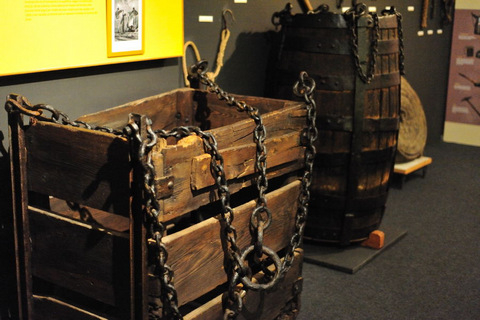 the mountains to the south of the town for well over 2,500 years and the municipal mining museum traces the evolution of mining in La Unión, through not only display cases and mining equipment, but also a well-compiled and interesting video in English or Spanish.
the mountains to the south of the town for well over 2,500 years and the municipal mining museum traces the evolution of mining in La Unión, through not only display cases and mining equipment, but also a well-compiled and interesting video in English or Spanish.
The Phoenicians are known to have been active in the Sierra Minera as long ago as 600 BC, particularly in the seams of silver which were discovered in Cabezo Rajado, and in the third century BC the Carthaginians 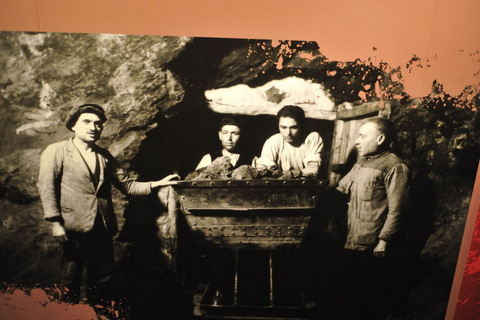 carried on the mining tradition before being ousted from south-eastern Spain by the Romans in 217 BC. The Romans were ruthless in their exploitation of the Sierra Minera, and at its peak the area was mined by a huge workforce of up to 40,000 people. The main minerals extracted were silver and lead, and the wealth provided by the mine made Cartagena one of the most important Roman cities in Hispania.
carried on the mining tradition before being ousted from south-eastern Spain by the Romans in 217 BC. The Romans were ruthless in their exploitation of the Sierra Minera, and at its peak the area was mined by a huge workforce of up to 40,000 people. The main minerals extracted were silver and lead, and the wealth provided by the mine made Cartagena one of the most important Roman cities in Hispania.
However, when the Romans eventually withdrew from the area after being defeated by the Vandals in 461 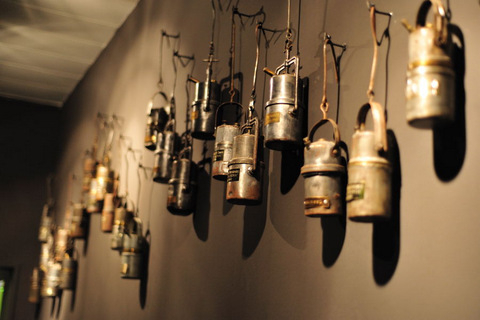 AD, mining came to a complete standstill, and so it remained during the years of Moorish rule and until after the Reconquista in the 13th century. Once the Christian kings were in charge in the area of Murcia, though, this all changed, and King Alfonso X ("the Wise") reserved the mines of La Unión for the Crown.
AD, mining came to a complete standstill, and so it remained during the years of Moorish rule and until after the Reconquista in the 13th century. Once the Christian kings were in charge in the area of Murcia, though, this all changed, and King Alfonso X ("the Wise") reserved the mines of La Unión for the Crown.
Further evidence of silver mining is abundant in the 16th century, and alum was also extracted from the hills. But the real resurrection of the mining industry began far later, in 1840, as an intrinsic part of a general 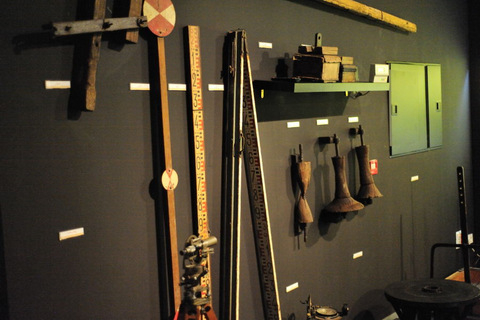 upsurge in Spanish mining, and the area became something of a Spanish equivalent of California due to the wealth of its mineral resources. This brought an increase in population, due largely to immigrants from Andalucía, and in La Unión many of the new arrivals were from Almería.
upsurge in Spanish mining, and the area became something of a Spanish equivalent of California due to the wealth of its mineral resources. This brought an increase in population, due largely to immigrants from Andalucía, and in La Unión many of the new arrivals were from Almería.
Intense activity followed, bringing an age of splendour to La Unión in the latter years of the nineteenth century (although conditions for the miners themselves were appalling). This “golden age” was relatively short-lived 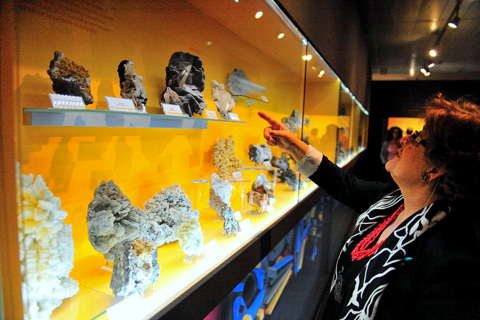 and the inexorable decline was accelerated by the end of the First World War, after which the demand for lead to be used in making weapons fell off sharply. A brief revival in the 1950s proved to be a false dawn, and the lasting heritage of this final chapter in the mining history of La Unión is the disastrous contamination of the bay of Portmán. The mines were shut down for the last time in 1991.
and the inexorable decline was accelerated by the end of the First World War, after which the demand for lead to be used in making weapons fell off sharply. A brief revival in the 1950s proved to be a false dawn, and the lasting heritage of this final chapter in the mining history of La Unión is the disastrous contamination of the bay of Portmán. The mines were shut down for the last time in 1991.
The Museo Minero in La Unión takes visitors on a journey through all of these stages in the mining history of  the area. Located inside the Casa del Piñón, a building dating from the peak of the boom in the town’s economy in 1899 which is also the Town Hall, this museum includes an impressive collection of 200 different minerals and various mining tools and equipment from the last 2,000 years. Other exhibits show the daily reality for those who worked in the mines, and there is a fascinating audiovisual in English about the history of the mines and the extraction methods used.
the area. Located inside the Casa del Piñón, a building dating from the peak of the boom in the town’s economy in 1899 which is also the Town Hall, this museum includes an impressive collection of 200 different minerals and various mining tools and equipment from the last 2,000 years. Other exhibits show the daily reality for those who worked in the mines, and there is a fascinating audiovisual in English about the history of the mines and the extraction methods used.
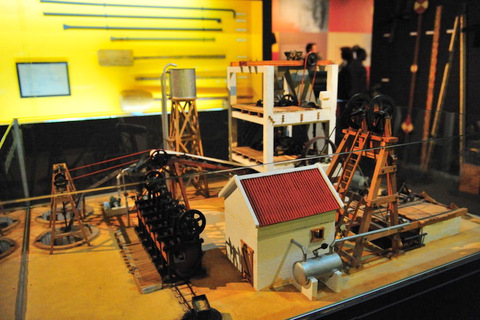 Most of the minerals extracted from the mountains near La Unión were zinc, iron, manganese and tin, although silver also played an important role in attracting prospectors. These substances and their various crystalizations have made the area a popular one for collectors of minerals, and they form the basis of the mineralogical section of the museum, where a wide range of phosphates and sulphates are also featured. Each year La Unión hosts a mineral fair where enthusiasts and collectors can display and purchase minerals and fossils, which takes place from Thursday to Sunday of the Easter week ( Semana Santa).
Most of the minerals extracted from the mountains near La Unión were zinc, iron, manganese and tin, although silver also played an important role in attracting prospectors. These substances and their various crystalizations have made the area a popular one for collectors of minerals, and they form the basis of the mineralogical section of the museum, where a wide range of phosphates and sulphates are also featured. Each year La Unión hosts a mineral fair where enthusiasts and collectors can display and purchase minerals and fossils, which takes place from Thursday to Sunday of the Easter week ( Semana Santa).
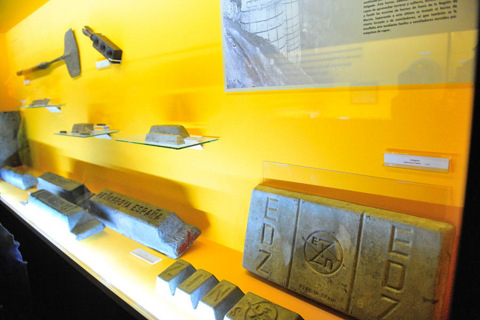 Alongside the geological and mining exhibits are others showing how local society developed as a function of the activity in the mines, with customs and traditions having been derived from mining and those involved in it. These include the flamenco “Cante de las Minas”, which is thought to have been brought to the Region of Murcia by the nineteenth-century immigrants from Andalucía, and the Museo del Cante de las Minas is also housed in the Casa del Piñón.
Alongside the geological and mining exhibits are others showing how local society developed as a function of the activity in the mines, with customs and traditions having been derived from mining and those involved in it. These include the flamenco “Cante de las Minas”, which is thought to have been brought to the Region of Murcia by the nineteenth-century immigrants from Andalucía, and the Museo del Cante de las Minas is also housed in the Casa del Piñón.
The mining museum displays a wide range of mining tools recovered from sites within the Sierra Minera, as well as a collection of original images showing the miners who worked in the mines of La Unión.
It’s an interesting and well compiled collection and is very useful to visit prior to the Parque Minero, filling in on the history of the area and setting the context for the Mina Agrupa Vicenta.
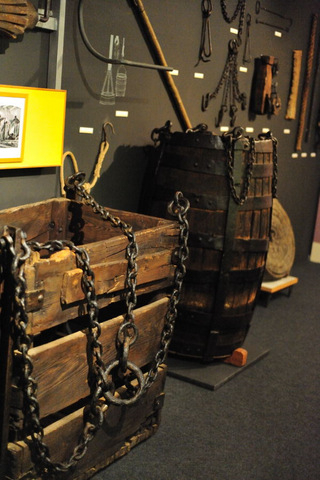 Address: Calle Mayor, 55, 30360 La Unión (Murcia)
Address: Calle Mayor, 55, 30360 La Unión (Murcia)
Telephone: 968 541614 (Tourist Office)
Click for map, Casa del Piñon Calle Mayor La Unión
Opening hours: Monday to Saturday 10.00 to 13.00
Admission: 3€ (2€ per person for groups of 15 or more)
The museum is closed on 1st and 6th January, 19th March, Easter Thursday, 9th June, 25th July, 15th August, 7th and 12th October and 6th, 8th, 24th, 25th and 31st December.
Admission is free of charge on 18th May (International Museums Day) and 4th December (the feast day of Santa Bárbara, the patron saint of mining).




































